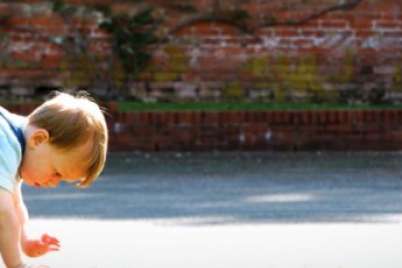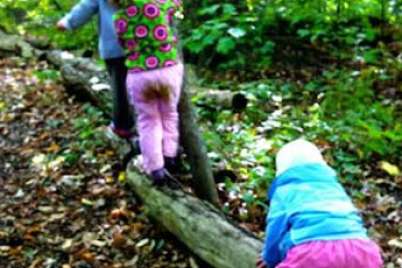
14 ways to help your toddler with balance and coordination
When I got on a paddleboard for the first time in years last summer, my core quickly reminded me that it had been a while since I had attended a Pilates class.
I thought I would glide across the lake like the graceful swan I consider myself to be. Instead, I fell off the board in front of a dock with EIGHT people watching as I struggled to pull myself back up.
For about 10 years now, I’ve attended Pilates classes on and off. They strengthen my muscles, make me focus on my body awareness and concentration, and also improve my flexibility. But most importantly, Pilates improves my coordination and balance. (A crucial skill when paddleboarding!)
And while your toddler might not be taking up paddleboarding just quite yet, they do need to develop their balance and coordination to master tasks such as climbing stairs, climbing on furniture, walking, walking on uneven surfaces, leaning over to pick up their toys, feeding themselves, and even sitting with good posture.
Basically, good balance means you can hold your body steady while standing, moving, or even sitting without falling over. Coordination is the ability to move two or more body parts at the same time smoothly and efficiently.
We’ve got 14 ways to help your child develop their balance and coordination. Have fun and watch as your toddler’s confidence grows, but we suggest you keep close to your toddler as they start to expand their mobility. As they test their limits, their balance and coordination will develop.
1. On the stairs
Tackling stairs is often an adventure kids have been itching to do since they could crawl. Once your child is walking, it’s a good opportunity to help them do so safely. Let them hold your hand and place one hand on a railing or wall as you climb up a few stairs together.
Start with three stairs and slowly add more. Once they become more and more comfortable, you’ll notice less gripping of your hand. When they have decided to climb without your hand, always stay close and ensure they’re still using their other hand to hold on to the railing or wall.
2. The flat “balance beam”
Before your child runs away to join the circus, it’s important that they learn to be able to balance just like a tightrope walker. (Did you know that another word for tightrope walker is funambulist? Fun fact… ish).
Use painter’s tape to set up a balance beam and let your child walk from one end to the other. Once they master walking a line, add tape going in different directions. For an even bigger challenge, have your child hold an object in one hand as they walk.
3. Freeze dance
Dancing can improve balance? Absolutely! Once your toddler gets into their groove, it’s time to introduce them to a fun game to work their balance skills.
Start their favourite music (could be Beyoncé, could be The Wiggles—who am I to judge?). When they’ve danced for 30 seconds or so, stop the music and have your child freeze. Can they stay still without falling over? Play along for more fun.
4. The (less steady) tightrope
Using an actual rope, this activity moves your toddler from the flat tape line to a more unstable surface. As with the tape line, use a skipping rope (or a pool noodle or garden hose for an even greater challenge) and have your child walk from one end to the other. Can they walk the line with a toy and place it down at the end of the rope without falling over?
5. Keep the ball rolling
Rolling a ball back and forth with your child is a great way to improve their coordination. Sit a short distance away from your child with both of you in a V-legged position. Slowly roll a ball that’s small and squishy enough for your toddler to be able to grasp. Have your child catch it and roll it back.
When they’ve mastered rolling and catching with two hands, see if they can do it with one.
6. The high(ish) beam
Make your own beam (see below for quick DIY instructions) and have it sit just above the floor or grass. You can also try this on an existing raised structure, like a sidewalk curb. As with your toddler on the stairs, let your child take your hand while they walk across and eventually you’ll find that they want to tackle the beam on their own.
Start with the beam very close to the ground and raise it as your child gets more confident.
(DIY beam: Use two 2″ x 4″ pieces of lumber to make one long and two shorter end pieces. Make sure to sand the wood to make it splinter-proof and screw the end pieces to the main beam. Save the extra cuts if you want to raise the beam as your child gets older.)
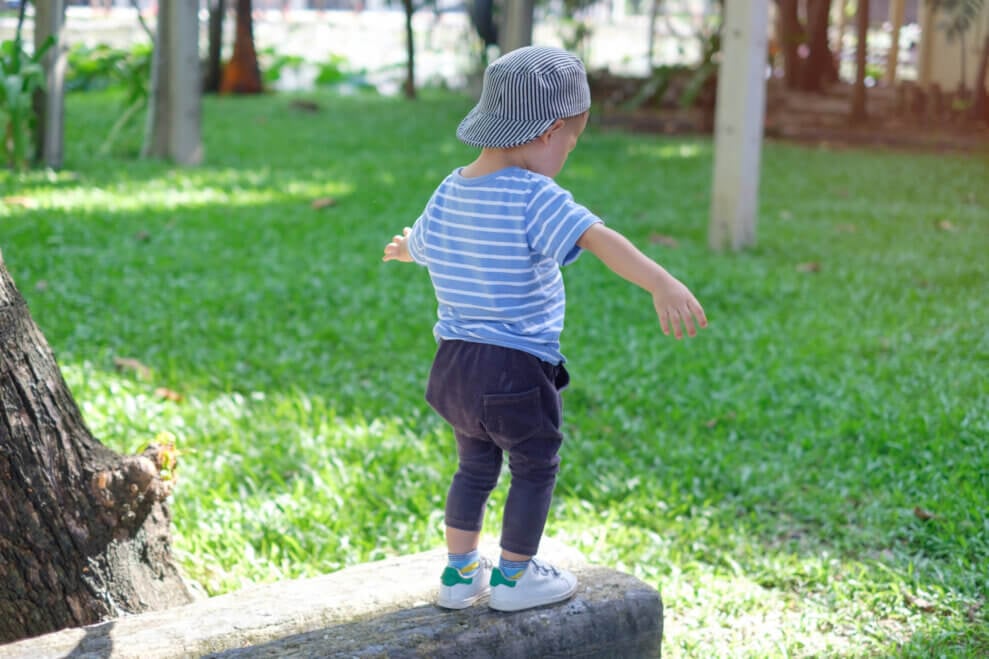
7. Stepping stones
The goal of a stepping stone (or similar item) is to have your child move using one foot on and one foot off on a series of raised surfaces. As they grow, they’ll move to not having to step off the objects between each one.
To keep your surfaces clean indoors, stepping “stones” can be purchased. Outdoors, you can use rock slabs or small pieces of wood. You might have to hold hands to get started but once your toddler gets the hang of it, they’ll love conquering this on their own.
8. Frog jump
Your toddler may be jumping with one foot leading or will be able to jump with two feet. But at both stages, they can be the greatest frogs in the pond.
Choose flat objects to represent lily pads. These can be scraps of fabric, face cloths, or pieces of cardboard. Make sure you use painter’s tape to keep them in place. Have your child jump from pad to pad. Can they croak or ribbit as they leap across the pond?
9. Balance board
A balance board is a toy with endless possibilities. It’s also an amazing way to develop balance and coordination. Once your child figures out where to place their feet to be able to stand without falling down, they’ll use the board over and over. Make sure the board is on a safe surface until the skill has been mastered.
But the board can be used for so much more fun! Flipped over, it becomes a bridge for cars to drive under or over. It can be a step stool, a bed for stuffies, a resting place for themselves. It’s an amazing open-ended toy.
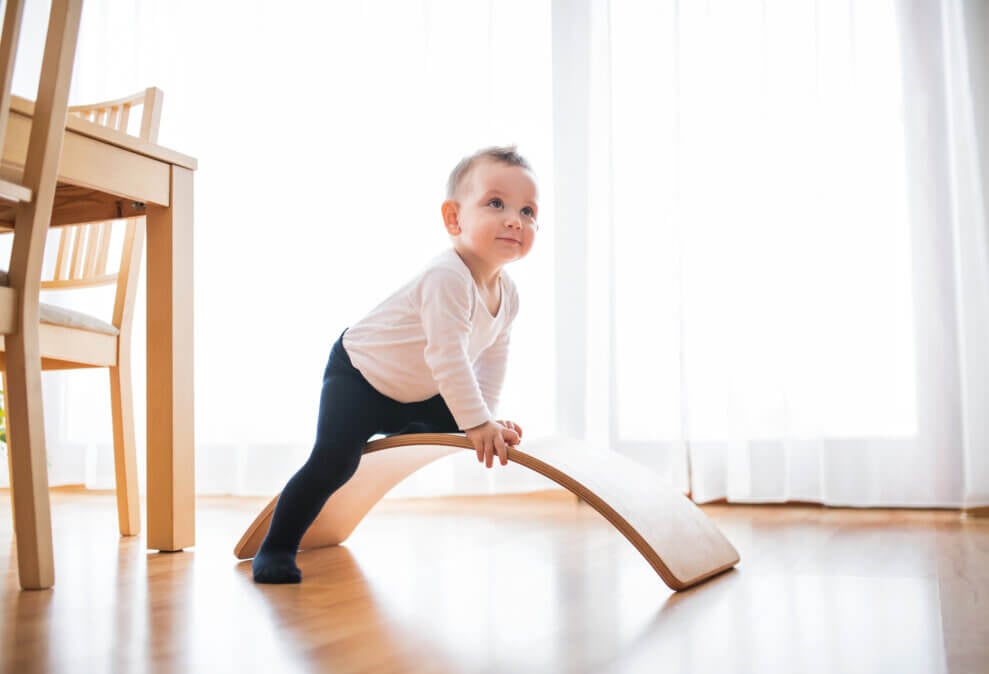
10. Exercise ball – Toddler edition
We’ve all heard about the benefits of using an exercise ball as adults. But what about for toddlers? While a standard exercise ball might be too big for your little one for now, kids this age can use a peanut ball (think exercise ball squished into a peanut shape) or a playground ball.
Have your toddler sit on the ball during story time or while they’re creating with play dough or colouring. Make it a joint activity and sit on an exercise ball too while you read to them.
11. Playgrounds!
A playground has so many opportunities for kids to climb and walk on uneven surfaces. On play structures, your toddler can climb and crawl. They can walk on frames around the sandbox and on uneven surfaces such as mulch or gravel.
12. Get a kick out of it
As a kid, I would have thought of kicking a ball as a good way to play Kick the Can or soccer but the action also develops balance and coordination. Kicking a ball requires your toddler to keep control in one leg while kicking with the other. Kick a ball back and forward with your child or give them a target such as a water bottle or pylons to knock over.
13. Balance bike
What I wouldn’t have traded for a balance bike when I was a kid! (I may or may not have taken a face plant or two while attempting to master the whole business).
A balance bike gets your toddler on a bike with two wheels (versus a tricycle) and gets them familiar with the feel of the balance needed to stay moving. The bike has no pedals so it’s easy to jump off of and there’s nothing to get in the way of your toddler’s legs as they glide along.
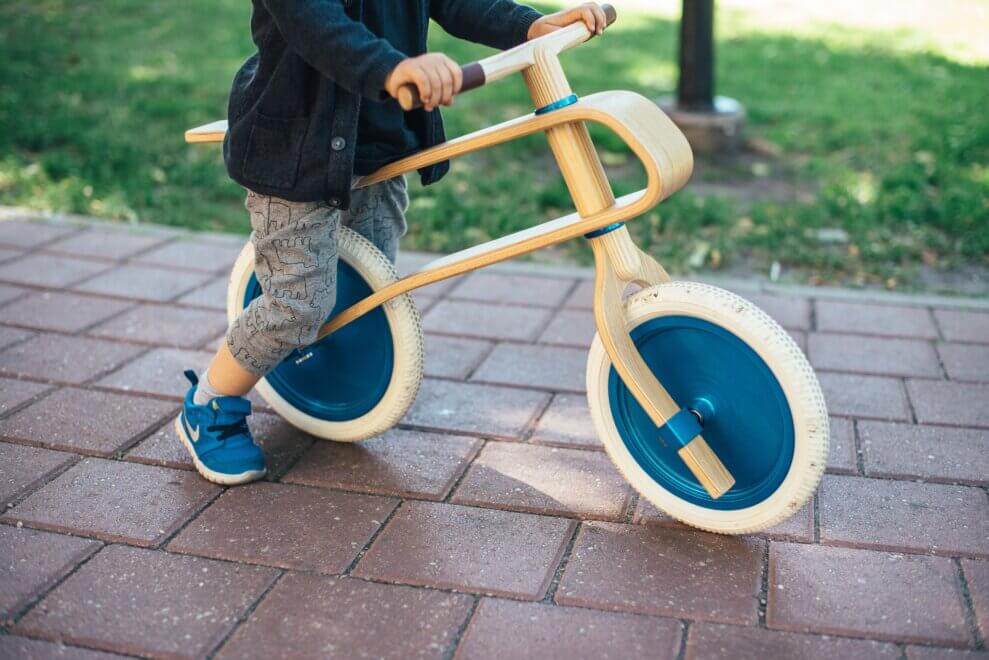
14. Yoga
Don’t sign them up for a yoga retreat quite yet, but there are so many yoga movements in which toddlers can engage. Familiarize yourself with some movements and do them with your child.
A few to get you started include:
- Tree Pose: Show your child how they can be as tall as a tree with this popular pose. Stand straight with two feet together. Place one foot at a point along the inside of your opposite leg. Hands can remain at your hips or over your head.
- Downward Dog: Your child will love seeing the world upside down with this yoga pose. Making an upside down V with your body, place your hands under your shoulders, your feet with heels down, and your head hanging between your arms.
- Boat Pose: Sit tall on the floor with your legs straight out in front. Lean slightly back with your arms straight out in front, then lift your legs up together so you’re sitting in a V position. Rock back and forth like a boat on the ocean or remain still in the pose.
And for more great options, check out these 6 mood-boosting yoga poses you can do with kids.
The more that toddlers are given the opportunity to develop their balance and concentration, the easier it will be to move smoothly and more confidently. And a confident child will want to pursue more and more movement. It’s a win-win!




